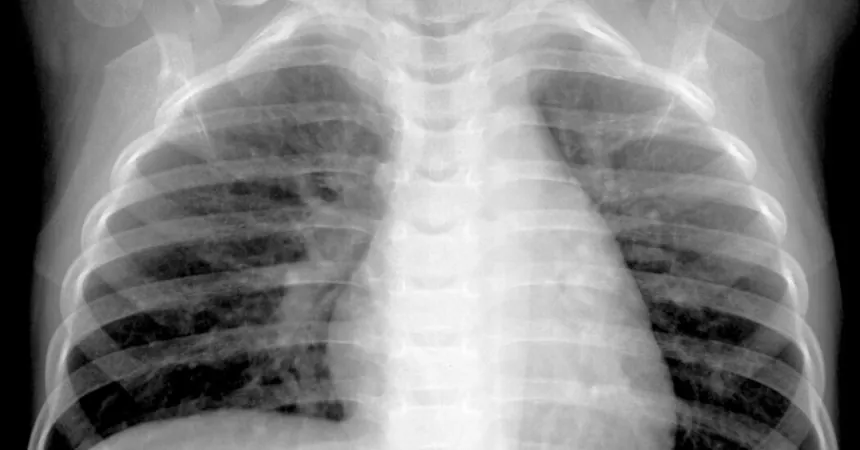
HMPV: The Respiratory Virus on the Rise in China – What You Need to Know!
2025-01-07
Author: Wai
What Exactly is HMPV?
HMPV is a respiratory pathogen that circulates globally every year, affecting people of all ages, particularly children. Most individuals will have been infected with HMPV by childhood and may experience multiple infections throughout their lives. In regions with colder climates, HMPV displays seasonal patterns similar to influenza; in warmer areas, it tends to circulate at lower levels year-round.
The symptoms caused by HMPV closely resemble those of more familiar viruses, such as influenza and respiratory syncytial virus (R.S.V.). These include cough, fever, nasal congestion, and wheezing. Although the majority of HMPV infections are mild—often mistaken for the common cold—serious cases can lead to bronchitis or pneumonia. Infants, older adults, and those with compromised immune systems or pre-existing lung conditions are at heightened risk for severe outcomes.
A Historical Perspective on HMPV
First identified in 2001, HMPV is thought to have been circulating in humans for at least six decades. Unlike more notorious viruses such as Covid or the flu, it lacks significant public recognition. Dr. Leigh Howard from Vanderbilt University explains that many HMPV infections go unrecognized and are grouped with other respiratory illnesses, as routine testing for HMPV isn't commonly practiced.
How Does HMPV Spread?
Transmission primarily occurs through droplets or aerosols when an infected person coughs or sneezes, as well as through direct contact or contaminated surfaces. Essentially, it spreads in the same ways that colds and flu do.
Vaccination and Treatment: What's Available?
As of now, there is no vaccine specifically for HMPV. However, there is a vaccine for R.S.V., and research is ongoing to develop a vaccine that could cover both viruses. Current treatment for HMPV infections focuses on alleviating symptoms since there are no antiviral drugs targeted specifically for it.
China’s Response to the HMPV Surge
Chinese health authorities have reported an uptick in HMPV cases, particularly among children under 14, and expect that cases may rise further due to anticipated travel and gatherings during the Lunar New Year holiday at the end of January. While acknowledging the increase, officials stress that HMPV is a known virus and not a significant threat compared to the initial uncertainty surrounding Covid-19. They’re implementing a monitoring system for pneumonia of unknown origin and urging the public to practice basic hygiene measures.
Public Reaction in China
In China, awareness and concern about HMPV are mixed. Social media users expressed confusion over the virus, with some even humorously questioning whether they could finally use up leftover masks from the pandemic. Conversations have surged around increased respiratory illnesses during this winter season, including influenza.
The World Health Organization Weighs In
The World Health Organization has stated that, while there’s an increase in respiratory infections—including HMPV—the pattern aligns with seasonal expectations for the Northern Hemisphere. Officials emphasize the need for China to share comprehensive data regarding the outbreak.
Should You Be Concerned?
While the rising HMPV cases in China echo early days of the Covid outbreak, experts reassess the current landscape. HMPV is a well-documented virus with existing testing capacity, and a general population immunity is present worldwide due to prior exposures. Severe outbreaks can challenge healthcare systems, particularly pediatric wards, but they do not typically lead to overwhelming situations for hospitals.
As Dr. Sanjaya Senanayake from the Australian National University emphasizes, timely sharing of data regarding the outbreak is vital. Collecting epidemiological data and confirming the presence of HMPV through genomic analysis will be crucial in managing this rise in cases effectively.
In conclusion, while vigilance is essential, the current trend of HMPV in China should not invoke the same level of concern as seen previously with Covid-19, thanks to prior knowledge and understanding of this virus.

 Brasil (PT)
Brasil (PT)
 Canada (EN)
Canada (EN)
 Chile (ES)
Chile (ES)
 Česko (CS)
Česko (CS)
 대한민국 (KO)
대한민국 (KO)
 España (ES)
España (ES)
 France (FR)
France (FR)
 Hong Kong (EN)
Hong Kong (EN)
 Italia (IT)
Italia (IT)
 日本 (JA)
日本 (JA)
 Magyarország (HU)
Magyarország (HU)
 Norge (NO)
Norge (NO)
 Polska (PL)
Polska (PL)
 Schweiz (DE)
Schweiz (DE)
 Singapore (EN)
Singapore (EN)
 Sverige (SV)
Sverige (SV)
 Suomi (FI)
Suomi (FI)
 Türkiye (TR)
Türkiye (TR)
 الإمارات العربية المتحدة (AR)
الإمارات العربية المتحدة (AR)